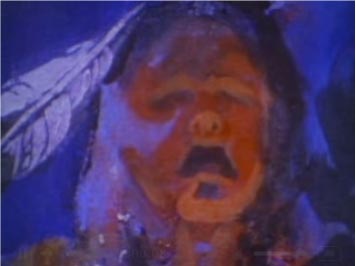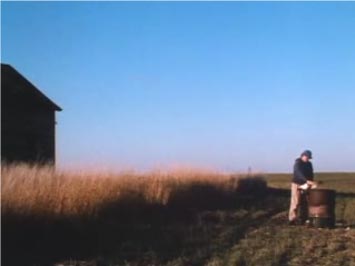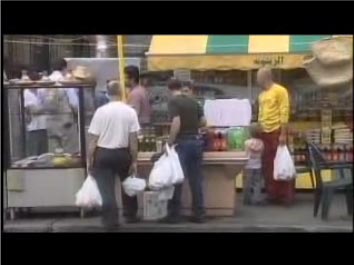 Does it still feel real? Documentary film as media, market and message: 1980-2010
Does it still feel real? Documentary film as media, market and message: 1980-2010
Abstract
This essay takes an autobiographical approach to discuss and analyse developments of the last thirty years in the aesthetics, content, and institutional and commercial realities of documentary film production in North America and the English-speaking world. Parts of Section 3 are adapted from an unpublished paper given at Visible Evidence in Brazil. Parts of Section 5 are adapted from a presentation given at the Concordia University President’s Conference on Surveillance and Security, which is unpublished but available as a web cast on the Concordia University site http://coms.concordia.ca/faculty/schwab.html.
“Geography is destiny”
I grew up in rural South Dakota, a place without many people, and most of the ones who were there were nearby relatives. What the place lacked in people, it made up for in space, and light and quiet. Being raised on the prairies has in many ways been reduced to a sentimental cliché by the depictions in popular culture – Who Has Seen the Wind, My Antonia, and various incarnations of Little House on the Prairie. But all clichés hold an element of truth, and I feel growing up on the vast and isolated prairies imbued me with a profound respect and appreciation for the landscape and the creatures who live in it, a sense that human beings are not necessarily the centre, the ‘be-all and end-all’ of life on this planet, that there is a spiritual world that exists behind and alongside the physical one we can see and choose to obsess over, that much of what can sustain one in life is already there to be found on the inside, not imported from somewhere or someone else.
Beyond the influence exerted by the prairie landscape itself, I think I was also very much affected by the social reality of the place. South Dakota is situated on the northern plains, an area that was particularly hard-hit by the Depression and the Dustbowl of the 1930s. The particular area of north eastern South Dakota that I come from was settled by draft-avoiding Germans from Russia, socialist-leaning Finns and other Scandinavians. It is a region where the tall grass prairie gives way to the short grass prairie – where farmland with occasionally sufficient rainfall gives way to ranch land with rarely sufficient rainfall. The physical conditions, ethnic make-up, and economic realities of this area made it a hotbed of support for the pro-labour Populist Party in the 1890s, and for the socialist Nonpartisan League in the years prior to World War I. My grandfather Joe Schwab told me more than once that President Franklin Roosevelt saved the people of our region, that without the relief payments and “make-work” programs of the New Deal, survival would have been impossible. To this day, even in the reliably Republican Great Plains, this area remains Democratic.
“Two legacies”
Perhaps it is this legacy, along with my attachment to the landscape of the plains, which drew me to the work of the social realist filmmakers and photographers of the 1930s and 1940s. I think my own films have been deeply influenced by the work of the early masters of classic documentary – artists who saw form and content as equally important, two parts of a seamless whole: Robert Flaherty, who sought out isolated cultures living in imposing landscapes; Joris Ivens, who with Rain, The Bridge and other films, created “experiments in design” out of the forms and movements of everyday life; and Pare Lorentz, whose poetic, land-based social advocacy classics The Plow that Broke the Plains and The River were critical in the formation of my own filmmaking. My early desire was to make films that would adhere to the carefully-crafted forms of these classic documentary filmmakers, which are traditional in formal style, but which seek to expand the pallet of non-fiction cinema by avoiding ‘talking heads’ or strict cinema vérité in favor of an approach more closely allied with painting, one which focuses on landscape, shapes and shadows, textures and colors, natural sounds and the conversational voice to convey a subtly-controlled, intimate, and deeply personal picture of reality.
These characteristics of social commitment, emphasis on formal technique and concern for light, shape, texture and environment are also found in the work of many still photographers of the era, most of who worked for government agencies such as the Farm Security Administration. Dorothea Lange, Paul Strand, Walker Evans and John Vachon all made work with a high degree of formal craft and a social vision, and I turn to their work for inspiration, and outright ‘borrowing’, again and again in my own work.
My ‘natural’ attachment to this tradition was no doubt further intellectually strengthened during my undergraduate years in the late seventies, when I was simultaneously exposed, on the one hand, to the booming interest in oral history then sweeping the social sciences and entering the popular consciousness through the work of Studs Terkel and others, and on the other hand, through my wife, mother and various friends, to feminist scholarship which sought to examine what Will and Ariel Durant called “the shores of history” – the stories of ordinary people, regional cultures and daily life which had received little attention from the “great men and great wars” approach of traditional historical study.
These influences found their way directly into my artistic practice when, after finishing university in 1979, I began working on films with my wife Christina Craton, starting a professional collaboration which continues in some ways to this day. Chris was, and continues to be, very committed to the use of oral interviews with subjects who actually lived through or have first-hand knowledge of the events depicted in our films, relying on these more than official texts and experts to get at the authenticity of the story. She also possesses a strong belief that film can and should function both as a tool of social and political change and as a creative expression of the maker’s inner life, as art. And so these two streams of influence, the reflective, lyrical, mystical, poetic on the one hand, and the social realist, politically progressive, populist historical on the other, exist side-by-side in my work, making it a bit of an oddity in the independent media world, suspended somewhere between the gallery/museum scene and the land of TV documentaries.
We actually initially found a home for our style of filmmaking with small non-profit agencies such as museums and historical societies which were looking to document and preserve forgotten or ignored stories and were open to creative visual approaches. Ghosts Along the Freeway, made for the Hennepin History Museum in Minneapolis, depended on first-person oral histories to document the negative effects of freeway building on the African-American community in St. Paul, MN. But this film went even further by using visuals drawn from the personal photo collections of former residents of the now-destroyed Rondo neighborhood, blended with more experimental live-action abstractions of industrial cityscapes inspired in part by the work of social realists Charles Sheeler, Ben Shahn and St. Paul native John Vachon.

The aesthetic of the film Ghost Dance, on the other hand, proceeds from a much more mystical, mythic assumption: the idea that the past lives on in the land, and that the landscape echoes with the voices of those who died at a place called Wounded Knee. The narration in this case is drawn from the writings of poets who tried to capture in a lyrical way the meanings and consequences of the Wounded Knee massacre. Visually, the film depends in part on paintings depicting the events at Wounded Knee, as well as the few known photographs pertaining to the massacre, but the main emphasis is again on the landscape as a character, with a spirit and a memory of its own.

“The personal is political”
In addition to the influences described above, I have definitely also been affected by a general trend toward more personal and autobiographical work which has been growing in the field of independent documentary and experimental production for some time. This trend has been driven in part by the availability of lighter, cheaper, high-quality equipment that has made more personal work a financial possibility for many artists. But this trend also owes much I think, to the rhetoric of 1970s feminism, particularly Robin Morgan’s enduring statement that “the personal is political”, which many of us from that era took to heart, to increased production coming from ‘marginalised’ cultures in ethnic and gay and lesbian communities. It also relates to the very basic human desire on the part of viewers and audiences, including those who happen to be curators, programmers and members of funding agencies, to see something of the artists’ personality and humanity in the pieces created.
On a subjective note, I feel that it is important to understand that all of this was happening at a point when the critical and creative hold that direct cinema and observational styles had held over independent documentary filmmaking for decades was growing weaker. In the time of 24 hour news cycles and ubiquitous web cameras, the observational style was no longer unique or novel, and sophisticated audiences were by now well aware that in the words of Errol Morris “style doesn’t guarantee truth, it doesn’t guarantee anything”. The lifting of the burden of the observational style and the reopening of the documentary to a wider set of aesthetic approaches in many ways meshed perfectly with the market and technical changes of the era; suddenly, point of view, authorial voice, opinion, critical thinking, passion, and aesthetics, style and even entertainment were important aspects of documentary filmmaking.

“The medium is the message”
However valid various sociological or philosophical ideas about the reasons for the ‘doc renaissance’ of the 1990s and this decade may be, my own experience as a teacher and maker of documentary film, as well as a former promotion coordinator for an independent distributor of political documentaries compels me to stress the importance of understanding this phenomenon in an historical context, and as resulting from a confluence of trends in production, funding and marketing.
In a broad sense much, if not most, of modern politically committed documentary filmmaking has its roots in the ‘movement politics’ of the 1960s and 1970s. Activists in the anti-war, civil rights, feminist and environmental movements recognized the power of the media in getting their message out, and large numbers of them moved into various forms of media production as a way to more directly address this audience. One almost immediate offshoot of this activity in North America was the formation of independent distribution companies – the so-called ‘boutique distributors’ – to undertake direct niche marketing to the non-theatrical market made up of universities, schools, libraries, public institutions and non-profit organizations. In the US, these distributors included organizations such as Women Make Movies, California Newsreel, and New Day Films, all of which sold and rented political and socially-engaged documentaries to the non-theatrical market, circumventing commercial theatrical and television markets to reach their audiences directly, initially by selling and renting 16mm prints, and later videotapes, at relatively high institutional prices. This distribution infrastructure was complemented on the production side by money available through largely publicly funded initiatives which sought to harness the power of media to effect positive social development. These ranged from the Challenge for Change program at the National Film Board in Canada to various ‘Great Society’ initiatives in the United States to various programming threads and production funds run by public broadcasters in various countries. This basic infrastructure was the basis for much of the politically committed documentary creation, distribution and presentation in much of the English-speaking world until the 1980s.
Then, two things happened. First, the 1980s saw the election of very conservative governments across the board – Thatcher in the UK, Reagan in the US, Mulroney in Canada – all committed to cutting back on public expenditures and getting the government out of areas in which they believed it did not belong. Aside from the chilling effect these policies had on content, fiscal conservatism had a ‘double whammy’ effect on the political documentary infrastructure, wiping out much of the money available for production at the same time as the budgets of traditional customers such as universities and libraries were being slashed. To make matters worse, this squeeze was taking place at the same time as the burgeoning market, driven by home video technology, was having the effect of driving down pricing and profit margins while making it easier than ever before to pirate and copy work. By the late 1980s, the situation of many socially-committed filmmakers and distributors appeared dire.
Then, two more things happened. The first was the impact felt from the increased availability of high-quality, low-cost, production and editing equipment that drastically reduced production costs and vastly increased creative flexibility while offering new opportunities for distribution and delivery to audiences that are still playing out in the world of ‘Web 2.0’ and beyond. This revolution in production technology, coupled with the proliferation of new delivery systems, meant that independent producers and distributors could in some cases offset falling prices and shrinking funding with broader and higher volume marketing strategies and leaner production budgets. The loss of public funding hurt many documentary filmmakers, but it also led many others to look for private sources of financing, often either by approaching individuals and activist groups in specific communities to support films relevant to these groups – gay rights and environmental activism being two areas in which people first successfully used this strategy – or by making films with an activist subject in a style that was entertaining and potentially marketable beyond the traditional non-theatrical market. Decreased dependence on public sources of funding and greater connection to the activist communities and audiences for whom the films were being made also frequently provided filmmakers the opportunity to speak in a more directly partisan and/or critical manner than had often been possible with government funding.
“We live in public”
In 2003, I was approached to work on a documentary that was being done by one of my former film students, Mahmoud Kaabour with Diversus Productions in Montréal, a project for the CBC ‘Passionate Eye’ series called Being Osama. The original idea of Being Osama was to look at the lives of several Arab-Canadian men living in Montréal who shared a first name with the person most widely associated with the 9/11 attacks, Osama bin Laden, and through this device, to look at the backlash against Arabs and to examine the local effect of the ‘war on terror’. Several of the participants in the film had stories about brushes with the security forces or paranoia about their name. But by the time we started shooting, it was two years after the attacks, and some of the initial backlash had calmed down. We started our shooting on the night that George W. Bush delivered his ultimatum to Saddam Hussein, giving him 48 hours to leave Iraq or else, and as one of the participants said at the time, “what happened to me after 9/11 seems trivial compared to what is happening now.”
Documentary film is always a negotiation between the maker and the subject about what will be revealed and what will be kept private and the balance between the two built on mutual trust. As our subjects let us in to their lives and revealed the parts of themselves they felt important and worthwhile to share, the film became much less about fear and discrimination and terrorism, although it touches on these, and much more about what the subjects wanted to convey about the individuality, diversity and humanity of the Arab experience in Canada, about the desire to find one’s place in new country and the struggle to find happiness and sense of security in the new society.

I came away from the experience with the Osamas, or ‘the Osami’, as we came to affectionately call them, with a much deeper understanding of the complexity, diversity and deep roots of the Arab community in Montréal, and greatly heightened sense of the immigrant experience as it is lived in contemporary society. The great majority of the people we talked to in the course of making the film had in some way been touched by war or violence, political or religious repression, poverty or physical want. It was a very humbling experience to get to know so many people who had been through so much and had such a great desire to be a part of this country, but who were also suspect and under suspicion because of very stereotypical views of their cultural and religious traditions. In the post-9/11 world many nations, including the US and Canada, have stepped up various kinds of surveillance, and in some cases curtailed some of the most basic legal rights of some citizens through the use of security certificates, secret courts and extraordinary rendition, all in the name of something called security.
In the larger context, documentary photography and filmmaking address subjects as varied as the world they document, but the one of the central aspects of the documentary tradition remains a strong and continuing commitment to social justice and to attempting to speak for the powerless. In a world in which increasingly, to quote the title of Ondi Timoner’s Sundance winning documentary, “we live in public”, there is more need than ever for thoughtful, committed work in documentary. There is still a role and a need for documentaries, journalism and citizen media to give voice to the marginalized, to expose injustice, to speak truth to power, and to question easy assumptions. That is the enormous contribution that documentary can make to the public conversation, and it is what I hope to continue to do in my practice and what I hope to encourage my students to do through my teaching.
Whatever the medium or method of expression, I think the underlying content and character of my work will continue to be shaped by these many influences. Interest in landscape and environment, remembering the past and making it visible, exploring the links between personal experience and the larger social and political context, a commitment to a social vision and to collaboration with other artists will, I hope, remain part of my work for a long, long time.
Filmography
Diversus Productions. (Producer), & Tim Schwab and Mahmoud Kaabour (Directors). (2004). Being Osama. [Television documentary commissioned for the CBC series, “The Passionate Eye”.]
Schwab, T., and Craton, C. (Producers, writers, directors). (1996). The Burning Barrel. [Documentary produced for the Independent Television Service (ITVS) with funds from the Corporation for Public Broadcasting (CPB).]
Schwab, T., and Craton, C. (Producers, writers, directors). (1991). Ghosts Along the Freeway. [Documentary.]
Schwab, T., and Craton, C. (Producers, writers, directors). (1990). Ghost Dance. [Documentary.]
About the author
Tim Schwab is Associate Professor and BA Program Director in the Department of Communication Studies at Concordia University in Montréal where he teaches film, video and sound production and documentary studies. He has produced and directed numerous documentaries including the IDA award-winning The Burning Barrel and the acclaimed CBC documentary Being Osama, broadcast on television networks worldwide. He is currently working on several documentary and new media projects about topics ranging from oral history and human rights to interactive narrative and the cinema of the Middle East.
Contact Details
Tim Schwab buddydogg@mac.com
